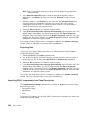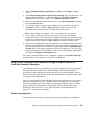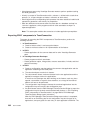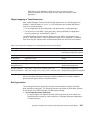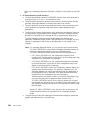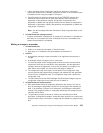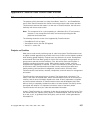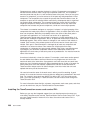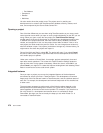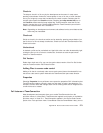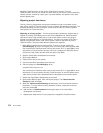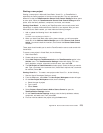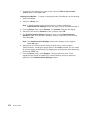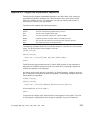Components are used to organize the data in a family. Components are arranged in a
hierarchical tree structure, with a single top component called root. The component
owns the parts that may be in it, and controls access to the parts. Once you are given
access to a component, you have access to all the parts and subcomponents in that
component. The component also controls the process that TeamConnection uses, for
example, to report and fix a defect. Within each family, development data is organized
into groups called components. The component hierarchy of each family includes a
single top component, initially called root, and descendants of that root. Each child
component has at least one parent component; a child can have multiple parents.
The release is somewhat analogous to a project. A release is a logical grouping of the
components that make up a product. An application is likely to contain parts from more
than one component. Because you probably want to use some of the same parts in
more than one application, or in more than one version of an application,
TeamConnection groups parts into releases. A release is a logical organization of all
parts that are related to an application; that is, all parts that must be built, tested, and
distributed together. Each time a release is changed, a new version of the release is
created. Each version of the release points to the correct version of each part in the
release. Each part in TeamConnection is managed by at least one component and
contained in at least one release. One release can contain parts from many
components; a component can span several releases. Each time a new development
cycle begins, you can define a separate release. Each subsequent release of an
application can share many of the same parts as its predecessor. You need to know the
name of the release.
A work area is basically a view of a release. For example, a work area can be opened
for each defect that needs to be fixed. More than one programmer can work in the
same work area at the same time. A programmer can have more than one work area
active at a time. A release contains the latest integrated version of each of its parts. As
users check parts out of the releases, update them, and then check them back in,
TeamConnection keeps track of all these changes, even when more than one user
updates the same part at the same time.
You need to know the name of the work area in which you will be working. A good
practice is to create and name a work area after the defect being addressed in the work
area. For example, name work area W1557 for defect 1557. You can create a work
area if you have the authority in TeamConnection, but this must be done through the
TeamConnection GUI.
For more information about families, releases, components, work areas, parts, and what
you can do with them, see your TeamConnection Documentation.
Installing the TeamConnection source code control DLL
Before you can use the integrated support from your development environment you
must install TeamConnection and the TeamConnection Source Code Control DLL. If you
are using TeamConnection Version 2.0.8 or later, the source code control DLL is
already installed.
268 User’s Guide



